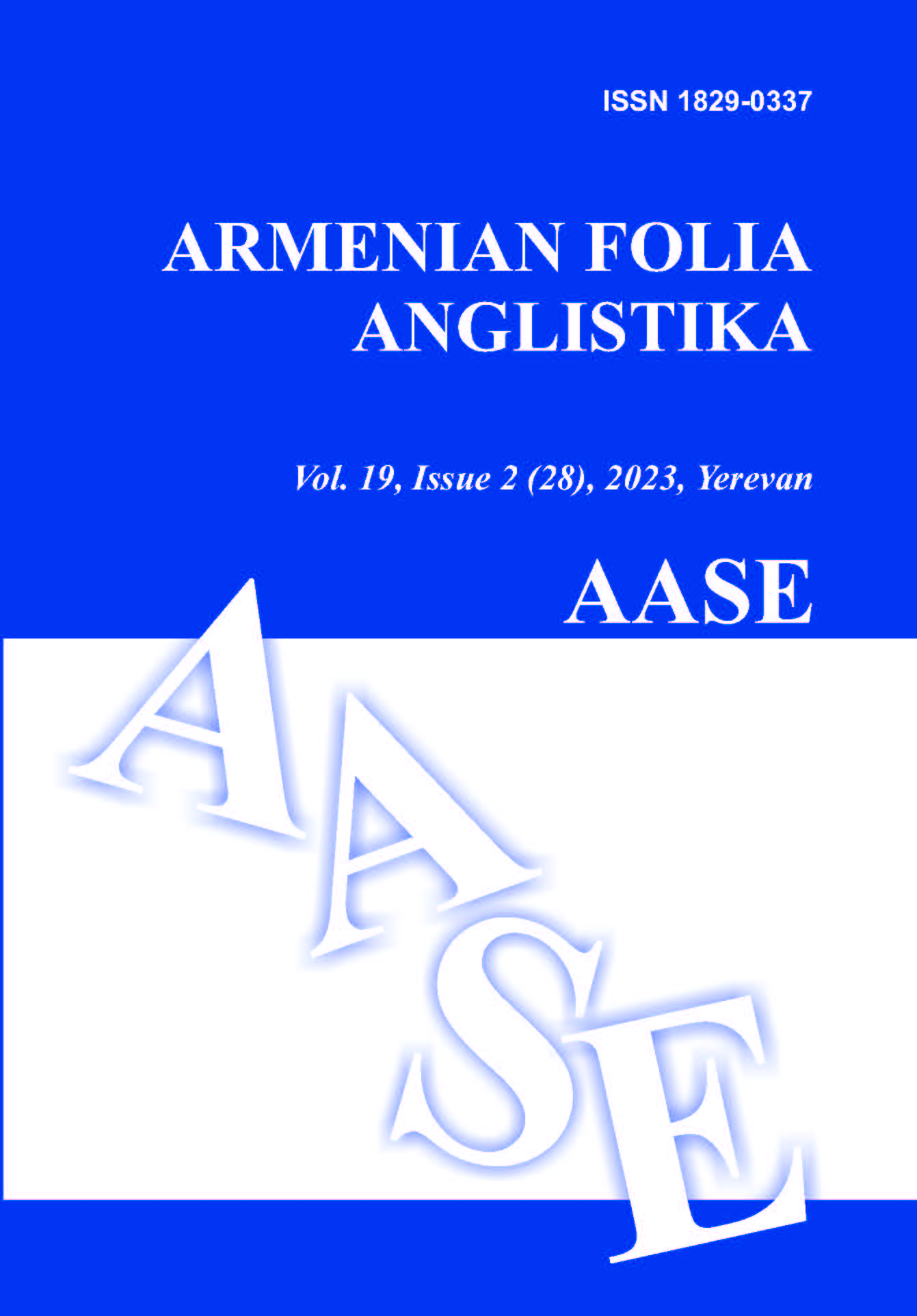EUPHEMISTIC REPLACEMENT AS COMMUNICATIVE STRATEGY IN THE NEWS MEDIA
DOI:
https://doi.org/10.46991/AFA/2023.19.2.031Keywords:
euphemistic substitution, communicative strategy, pragmatics, mass media , news reportingAbstract
In the modern era of mass media, news reports spread at an unprecedented speed, enabling people worldwide to get informed about current events. Despite the positive results of keeping media audience updated, in some complicated political situations, the ease at which news stories are formulated and made public may aggravate tension, harming the processes of political regulation or negotiation. In view of this, the use of unbiased and inoffensive language of news reporting is of paramount importance. Hence, the aim of the present research is to study the communicative strategy of mitigating meaning via euphemistic replacement in the news media. It is assumed that by replacing the informative units that nominate or describe dramatic and disastrous events with their euphemistic substitutes, the negative effect of the content can be minimised. The research is carried out on the material of articles distributed online by the media company Politico. The topic of the articles covers the dramatic humanitarian crisis in Artsakh (Nagorno Karabah region). The contextual analysis of the practical material is carried out from pragma-stylistic perspective. Euphemism is viewed not only as a figure of speech which serves a social regulatory function in the news media, but also as a tactical tool which pursues the communicative strategy of mitigating sensitive information and creating implied contextual meaning. The communicative-pragmatic study of the language data enables to conclude that euphemistic substitution is an effective communicative strategy aimed at maintaining a neutral stance on the conflict news stories and imparting implicit meaning.
Downloads
References
Abbot, G. (2010). Dying and killing: Euphemism in current English. English Today. 26 (4), 51– 52. https://doi.org/10.1017/S0266078410000349
Brown, P., & Levinson, S. (1987). Politeness. Some universals in language use. Cambridge: Cambridge University Press.
Caffi, C. (1999). On mitigation. Journal of Pragmatics. 31 (7), 881-909. https://doi.org/10.1016/S0378-2166(98)00098-8
Eliecer, C.- F. (2005). Euphemistic strategies in politeness and face concerns. Pragmalingüística. University of Castilla-La Mancha, 77–86. https://doi.org/10.25267Pragmalinguistica.2005.i13.05
Eliecer, C.-F.(2014). Euphemism and political discourse the British regional press. Brno Studies in English. 40(1), 5-22. https://doi.org/10.5817/BSE2014-1-1
Fraser, B. (2010). Pragmatic competence: The case of hedging. In: W. Günther, W. Mihatsch & S. Schneider (Eds.). New approaches to hedging (pp. 15–34),Bingley: Emerald Group,
Galperin, I.R. (1981). English stylistics. Moscow: Vyshaya Shkola.
Gasas, G. M., (2009). Towards a new approach to the linguistic definition of euphemism. Language Sciences, 31( 6), 725-739.
Grice, H. P. (1975). Logic and conversation. In P. Cole and J. L. Morgan (Eds.). Syntax and semantics (pp. 41-58), Volume 3. Speech acts. New York: Academic Press.
Hoggart, S. (1986). Politics. In: D. J. Enright, (Ed.) Fair of speech. The uses of euphemism (pp. 174–184 ). Oxford: Oxford University Press, pp.
Matthews, P. H. (1997). The Concise Oxford Dictionary of Linguistics. Oxford, New York: Oxford University Press.
McGlone, M. S., Beck, G., & Pfiester A. (2006). Contamination and camouflage in euphemisms. Communication Monographs, 73 (3), 261–282. https://doi.org/10.1080/03637750600794296
Paronyan, Sh. (2020). The use of manipulative tactics in hate speech. Armenian Folia Anglistika, 16, 2 (22), 143-161. https://doi.org/10.46991/-AFA/2020.16.2.143
Paronyan, Sh., & Ayunts A. (2020). From euphemism to verbal aggression in British and Armenian cultures: A cross-cultural pragmatic perspective. Flex: Scandinavian Journal of Intercultural Theory and Practice, 7 (1), 26-42.
Warren, B. C. (1992). What euphemisms tell us about the interpretation of words. Studia Linguistica, 46(2), 128 – 172. https://doi.org/10.1111/-j.1467-9582.1992.tb00833.x
Mironova, M.A. (2016). Evfemizmy w sovremennikh rosiyskikh SMI. [Euphemisms in modern Russian media]. Graduation thesis. Sankt- Peterburg.
Sources of Data
Gavin, G. (2023, January 7). Europe watches on as humanitarian crisis unfolds in Nagorno-Karabakh. Politiko.
Gavin, G. (2023, September 23). Biden envoy troubled by reports of ‘violence against civilians’ in Nagorno-Karabakh. Politiko.
Downloads
Published
Issue
Section
License
Copyright (c) 2023 Author(s)

This work is licensed under a Creative Commons Attribution-NonCommercial 4.0 International License.














